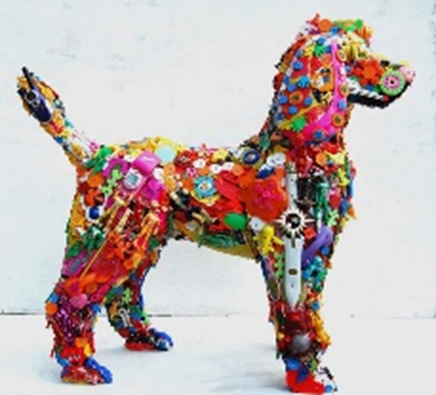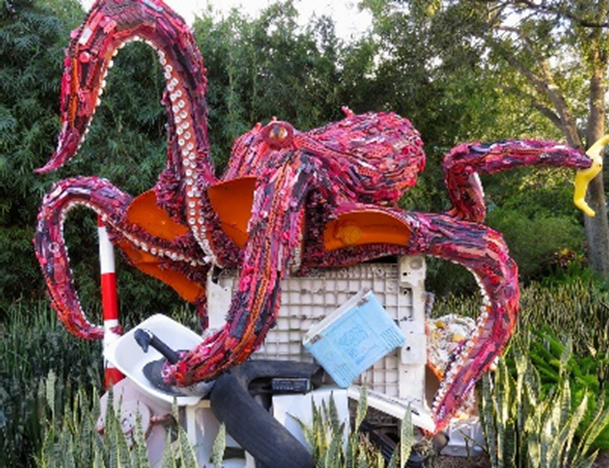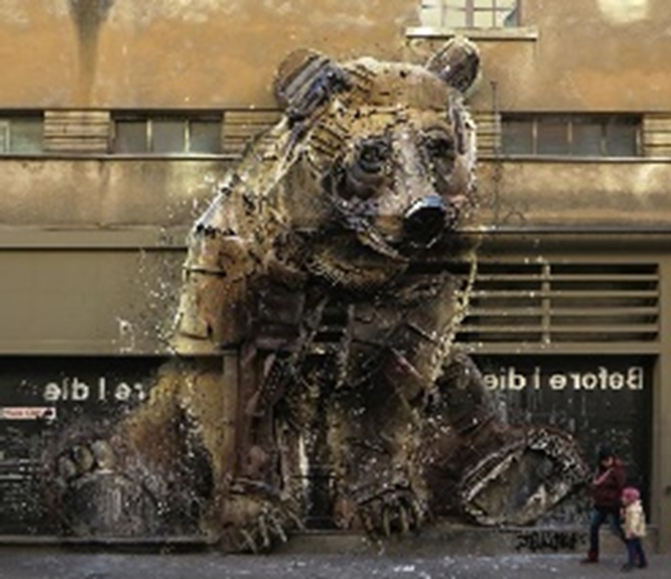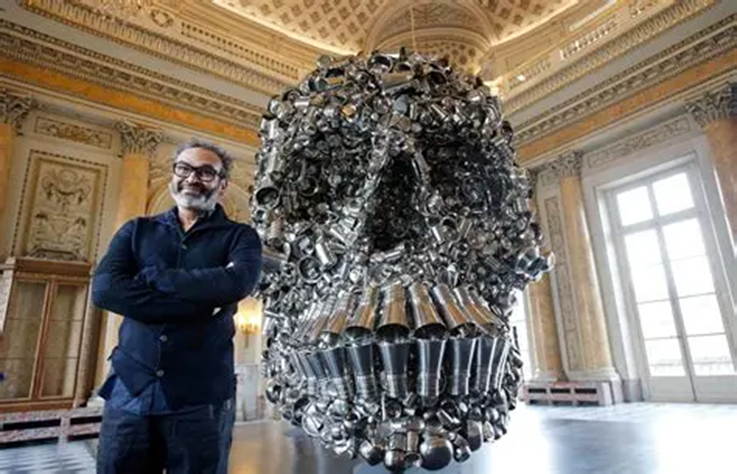Imagine walking into an art gallery where the sculptures are made from cigarette butts, plastic bottles, and fishing nets. Welcome to the world of eco-art, where pollution becomes the inspiration for beautiful works of display. In the face of climate change and mass consumption, a growing movement of artists are turning trash into treasure, using discarded materials to challenge the way we see the planet and our actions.
Every year, humans generate over 293 million tons of trash. Artists transform this waste into something extraordinary that makes people look at everyday items in a completely different way and raises awareness about the environmental impact of consumption.
Salma Moustafa

Based in Italy, Salma Moustafa uses silica gel balls, recycled plastic and materials collected from coastal areas, to make creative colorful earrings. Typically, silica gel balls come in a little bag with packaging and are perceived as trash, but they are very difficult to recycle. Each piece is handmade into delicate and artistic jewelry.
Robert Bradford

UK Artist Robert Bradford creates life-size animals and humans from discarded pieces of plastic, mainly colorful toys from his childhood. Bradford’s pieces have their own personal outline and cultural history as they are inspired by the toys he had at each age. Some of the sculptures contain up to 3,000 toys!
https://thecoolhunter.net/robert-bradford-recycled-toy-sculptures/
Washed Ashore Project

The Washed Ashore Project is a community-based project that collects plastic waste from beaches and turns it into giant sea creature sculptures. Their massive octopuses, whales, and jellyfish are made entirely of items like flip-flops, bottle caps, and toothbrushes. It raises awareness about ocean plastic pollution in a way that children and adults can understand instantly.
Bordalo II

Based in Portugal, this street artist, Bordalo II, creates massive, colorful 3D animal murals from urban junk, car parts, metal, plastic, and electronics. His “Trash Animals” series features endangered animals built from the very materials that threatened their existence.
Subodh Gupta

Subodh Gupta is renowned for turning kitchen utensils, tiffin boxes, and pots into monumental sculptures. Gupta’s art elevates ordinary, used items from Indian homes- commenting on identity consumption, and waste in modern life.
Add comment
Comments